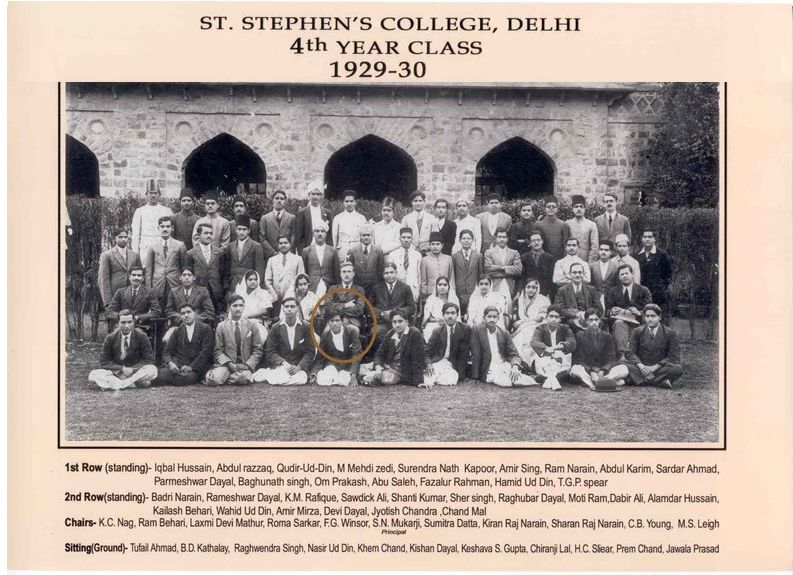
Subodh Mathur was born in Alwar, and educated in Jaipur, Delhi, and Cambridge, USA. He taught Economics for one year (1972-73) at Rajasthan University, Jaipur, and later (1981-88) at American University, Washington, D.C. He has been an independent consultant since 1988, occasionally teaching Economics at the American University, D.C. He lives with his wife, Anuradha Deolalikar in a suburb of Washington, D.C. In his spare time, he is an avid gardener, and the editor of this website.
My father's name was Khem Chand. He did not use Mathur, a sub-caste identifier, as his last name. He was born in 1911 in Alwar, which was a Princely State at that time. He attended St. Stephen's College in Delhi, which was, and still is, one of India's leading colleges.
His father (my grandfather) Shri Ram Chand was also a student at St. Stephen's College, where he got a Faculty of Arts degree. This was one level lower than a B.A. degree, but a high level of education in the early 1900s in India. He served Alwar State as the head of Baagaat (Garden Department). He also had his training at the Forest Training Institute in Dehradun. We have a book on Forest Engineering on which he has signed his name with the date as 26.11.1905.

In the last row, at the extreme right is Prof. Spear, an accomplished historian of modern Indian social history who had a great influence on my father.